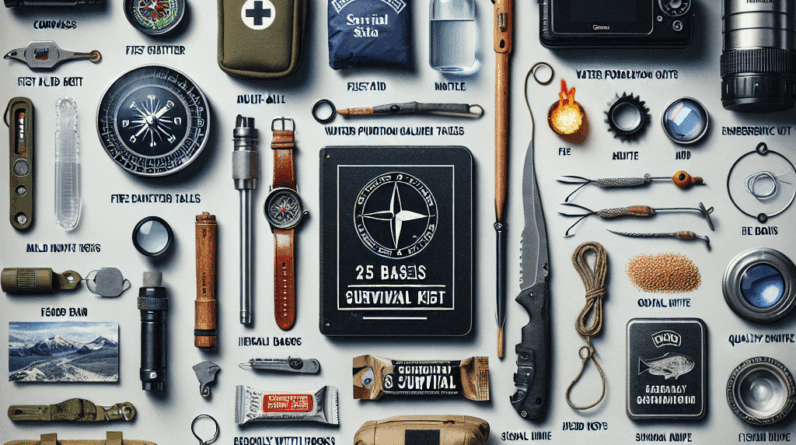Navigating waters during flood conditions can be perilous, but with the right knowledge and preparations, you can vastly increase your safety. This guide provides essential tips and insights into managing flood situations while boating, ensuring you and your crew remain safe.
Understanding Flood Conditions
# What is a Flood?
When I first started boating, the term “flood” conjured images of dramatic natural disasters. However, floods are common and pose significant risks to boaters. A flood occurs when water inundates land that is usually dry, which can happen due to excessive rainfall, snowmelt, or dam breaches. Recognizing these events is crucial as they can drastically alter your boating conditions.
Flood waters are often misleading. What might initially appear as minor water level changes can quickly escalate into hazardous situations. This has taught me the importance of constantly monitoring weather forecasts and staying updated on water levels.
Understanding flood conditions goes beyond the science; it involves preparing mentally for quick decisions and actions. Having an emergency plan is imperative in these situations, as quick thinking is often required for safety.
# Recognizing Flood Risks
From my experiences, I’ve learned that being aware of flood risks is fundamental for safe boating. Sudden rainfall, rapid snow melts, and water releases from upstream can lead to unexpectedly high water levels. Such scenarios can catch even experienced boaters off-guard.
I recall an outing where impending storm clouds prompted an immediate return to shore. This incident highlighted the importance of proactive risk management. Also, monitoring the water flow is crucial as even slight changes can affect boat stability. Trusting your instincts and erring on the side of caution can prevent many dangerous situations.
Checking Weather Alerts
The advent of technology has greatly benefited boating safety. Access to real-time weather alerts through devices like GPS or weather radios is invaluable. I always ensure to check these tools while boating to stay informed about any critical changes in weather patterns.
Consulting locals at marinas or docks also provides insights that might not be available through official forecasts. Integrating into the boating community and sharing knowledge enhances safety for everyone on the water.
Ignoring weather warnings can lead to severe consequences. A personal experience taught me the importance of heeding these alerts, no matter how insignificant they may seem. Prioritizing safety and making informed decisions is essential, especially when conditions are unpredictable.
Essential Safety Gear
# Life Jackets and Personal Floatation Devices (PFDs)
Life jackets are a non-negotiable safety requirement on the water, especially in flood conditions. They can be the difference between life and death. Ensuring every individual aboard has a properly fitting life jacket is crucial, and I always carry extra PFDs for everyone, including guests.
Selecting the appropriate life jacket is critical, and local experts can offer advice on the best type for your activities. Local regulations often dictate the requirements, so consulting with knowledgeable sources is beneficial.
# Emergency Equipment
Being prepared with the right emergency equipment can significantly affect your ability to handle unexpected situations. My boat is always equipped with a first-aid kit, flares, a whistle, and a flashlight. These items have proven indispensable in emergencies.
Organizing your emergency gear and keeping it within easy reach is essential. This preparation allows for quick access when time is of the essence, helping maintain calm and order during critical moments.
# Communication Devices
In today’s connected world, maintaining communication while on the water is crucial. I carry both a cellphone and a marine radio, as radios can be vital when cellular networks are unavailable.
Understanding how to operate these communication devices, especially in flood conditions, is crucial. Familiarity with channel protocols and emergency procedures can greatly enhance your safety.
Recognizing When to Evacuate
# Understanding Warning Signs
Learning to recognize evacuation signals is a critical skill for any boater. Signs of worsening conditions, such as rapidly rising water levels, visible debris, or sudden weather changes, should not be ignored.
Once, I had to evacuate when the river I was navigating became unexpectedly rough and began to swell significantly. This experience underscored the importance of heeding early warning signs and trusting your instincts.
# Developing an Evacuation Plan
An effective evacuation strategy involves knowing safe routes and discussing these plans with all passengers. Practicing these plans can make a real difference in an emergency.
Having multiple evacuation routes planned is wise, as conditions can change rapidly. This approach was beneficial during a trip last summer, allowing for a timely and safe return despite unexpected changes.
# Staying Informed
Continuously updating yourself on the latest weather and flood conditions is crucial. I regularly check local news and use apps that provide real-time updates. Social media and local community resources are also valuable for staying informed and prepared.
When unsure, seeking advice from experienced locals can provide additional safety insights, ensuring you’re well-prepared for any situation.
Conclusion
Boating during flood conditions requires careful preparation and understanding of the risks involved. By equipping your boat appropriately and knowing when to evacuate, you can ensure your boating adventures remain safe and enjoyable. Embrace the thrill of boating with the confidence that comes from being well-prepared.
FAQ
# 1. Why are life jackets essential in flood conditions?
Life jackets are vital as they provide buoyancy and increase survival chances in swift floodwaters, which can unexpectedly throw you overboard.
# 2. How can I stay informed about weather conditions while boating?
Utilize weather radios, GPS, and mobile apps for real-time weather updates. Staying connected with local news and following relevant social media channels also help.
# 3. What should be included in an emergency kit for boating?
Your emergency kit should contain a first-aid kit, flares, a whistle, a flashlight, and provisions like food, water, and necessary medications, all organized for quick access.
# 4. How can I prepare for an evacuation on the water?
Develop evacuation plans by mapping safe routes and discussing these with all passengers. Practice these plans and always have multiple backup routes.
# 5. When should I consider evacuating my boat?
Evacuate when you notice rapid increases in water levels, see dangerous debris, or experience severe weather changes. Always trust your instincts if you feel something is off.



